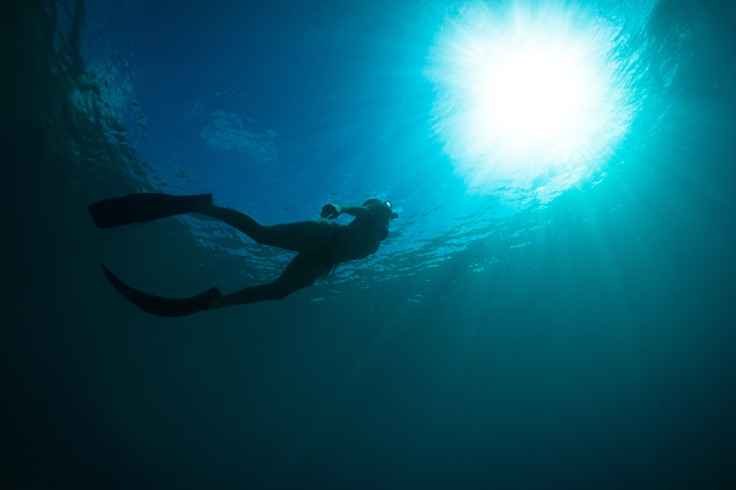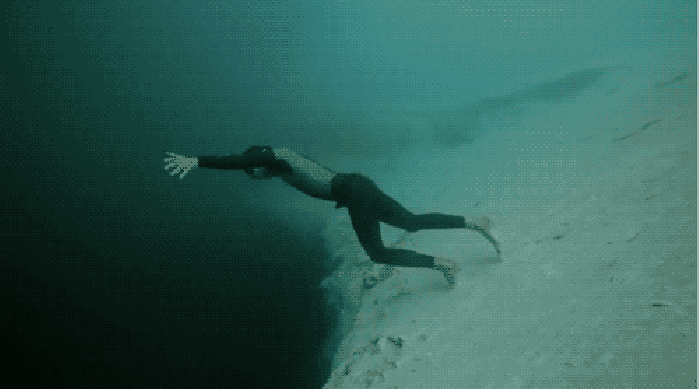Breaking Point: How Much Water Pressure Can The Human Body Take?

Depending on how you look at it, the human body is either one of the most vulnerable things on the planet, or one of the most resilient. It’s true we can do amazing things — heal where we once were bleeding, attack and destroy unfriendly microbial invaders, even knit our own bones back together. But despite our many abilities, we’re still pretty delicate when you consider the universe around us. There’s only a tiny window of conditions in which we can thrive, and things that are rather inconsequential in the universe — a dip in oxygen, shocking cold, a flare of nuclear radiation — would mean the end of us in the blink of an eye.
But what exactly can we take? What are the limits of our survival, and what happens to our body if we cross them? Here I explore the body’s (many) breaking points. First up: water pressure.
What is pressure?
Pressure can generally be defined as the force, per unit area, applied to the surface of something. We’re always under a certain amount of pressure, we just don’t notice. We hear about air pressure on the weather channel, but we actually have our own pressure in air-filled spaces of our body like our lungs, stomach, and ears. Our internal pressure is usually equal to the outside air pressure (the weight of the atmosphere pushing down on us.) We become uncomfortable whenever we venture away from sea level; our internal pressure is no longer equal to the ambient pressure. This is why our ears hurt when we go up in a plane or when we dive too deep underwater.
There are a few ways pressure changes could spell doom for us humans. One of these is what would happen to us if we were to materialize deep underwater without a pressurized suit — death, in a nutshell, but I can explain.
Underwater Pressure
Ever wonder why we can’t just create extra-long snorkels to breathe underwater? Seems like an obvious and easy solution for breathing without an oxygen tank, but there’s a good reason this can’t work. For every 33 feet a diver descends the weight of the water above them increases by 15 pounds per square inch. At only a few feet below the surface, the water pressure is already too great for the muscles that expand and contract our lungs to work, making it extremely difficult for us to draw breath. A couple feet of water pressure isn’t enough to do serious damage yet, but looking at deeper levels shows how pressure affects us a little more gradually.
At a depth of around 100 feet, (remember, you’d have four times the normal pressure pushing down on you at this point), the spongy tissue of the lung begins to contract, which would leave you with only a small supply of air that was inhaled at the surface. An ancient “dive-response” is then triggered in our body, which constricts the limbs and pushes blood toward the needier heart and brain. This extra blood expands the blood vessels in the chest, which balances out the pressure from the outside water. During their deepest dives, a diver’s heart rate can dip to only 14 beats per minute; for reference, this is about a third of the rate of a person in a coma. Scientists aren’t sure why we’re able to sustain consciousness at considerable depths like this, but our instinct to survive can do some pretty crazy things at life-or-death moments like these. A convenient mechanism, for sure, but we can’t survive like this for long.

If you somehow got stuck in the middle of an oceanic abyss, the deepest part of the ocean, you’d have a few things to worry about. The lack of breathable oxygen, freezing cold, and these charming creatures, to name a few, but the huge amount of water pressure pressing down on you would definitely be the immediate threat. Since your body’s internal pressure is so much less than the ambient pressure, your lungs would not have the strength to push back against the water pressure. At a deep enough level, the lungs would collapse completely, killing you instantly. This is the most extreme consequence of underwater pressure, but thankfully most of us will never have to deal with ocean depths of this magnitude.
So, how deep can we go? Scientists haven’t yet determined a hard limit for how deep we can survive underwater. There have been a few instances of divers surviving ridiculous depths (not without side effects), but most professional free divers don’t go past 400 feet deep. The only way to test a limit would be to test on a real, live human, so obviously there are no handy studies to help us formulate an answer. Scientists do know, however, what would happen to a diver who crossed their body’s limit. A diver could die from bleeding into the lungs, or pass out from the strain the redistribution of blood lays on the heart.
“How much water can move in before you start bleeding into your lungs?” Dr. Claes Lundgren, director of the Center for Research in Special Environments at the University of Buffalo Medical School, asked PBS. “It’s not unheard of for deep divers to cough up blood when they get to the surface. I think these divers are very close to the limit.”



























